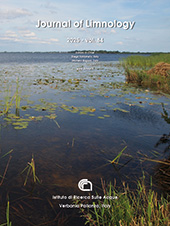Response of freshwater periphytic diatoms to elevated cadmium concentration: results of an experimental study
All claims expressed in this article are solely those of the authors and do not necessarily represent those of their affiliated organizations, or those of the publisher, the editors and the reviewers. Any product that may be evaluated in this article or claim that may be made by its manufacturer is not guaranteed or endorsed by the publisher.
Authors
The study highlights the importance of biological monitoring as an effective tool for assessing the impact of chemical substances on living organisms. It offers significant advantages in detecting ecological changes and contributes to a deeper understanding of environmental risks. The application of biological observation supports the protection of both public health and natural ecosystems. Aim of the study was to determinate impact of cadmium on periphytic diatoms biodiversity, structure under laboratory conditions and evaluate application of diatoms as cadmium bioindicators. Species diversity was found to decrease with increasing cadmium concentration in the water: 85 taxa of diatoms were identified in the control sample, and decreased with changing cadmium concentration, from 59 species at 0.01 mg Cd/l to 52 at 0.1 mg Cd/l. The concentration of cadmium in environment was reliably indicated by Navicula lanceolata, N. gregaria and N. rostellata, whose cell proportion significantly decreases with increasing cadmium, and Achnanthidium spp., and Fragilaria spp., whose proportion in the samples increases with increasing cadmium level. The frequency of frustule and theca carpel deformations increases at higher cadmium concentrations: at 0.01 mg Cd/l more than 8% of diatom cells become deformed, and at 0.04 mg Cd/l – 12%. It was determined that N rostellata is the most prone to deformation, therefore, from the bioindicative point of view, it is the most valuable species of periphytic diatoms among those studied.
Ethics Approval
Francesca Bona, Department of Life Sciences and Systems Biology, University of Turin, ItalySupporting Agencies
NATO Science for Peace and Security Programme “Creating a Strategy for Assessing and Restoring War-affected Aquatic Ecosystem”How to Cite

This work is licensed under a Creative Commons Attribution-NonCommercial 4.0 International License.






